Indoor Parsley Growing Tips: Unlock the secrets to a thriving herb garden right inside your home! Have you ever dreamed of snipping fresh, fragrant parsley straight from your kitchen windowsill to garnish your favorite dishes? I know I have! It’s a simple pleasure that elevates any meal, and with these easy DIY tricks, it’s totally achievable, even if you don’t have a green thumb (yet!).
Parsley, a culinary staple for centuries, boasts a rich history stretching back to ancient Greece and Rome, where it was initially valued more for its medicinal properties and symbolic uses than its flavor. Today, it’s a beloved herb worldwide, adding a vibrant touch to countless recipes. But let’s face it, buying fresh parsley from the store can be a gamble – sometimes it’s wilted, sometimes it’s expensive, and sometimes you only need a tiny bit! That’s where the magic of growing your own comes in.
This DIY guide is your passport to a constant supply of fresh, flavorful parsley. I’ll share my tried-and-true indoor parsley growing tips, covering everything from choosing the right container and soil to mastering watering and lighting. Imagine the satisfaction of knowing exactly where your herbs come from, reducing food waste, and saving money – all while adding a touch of greenery to your living space. So, grab your gardening gloves (or don’t, it’s indoor gardening!), and let’s get started on this exciting journey to fresh, homegrown parsley!
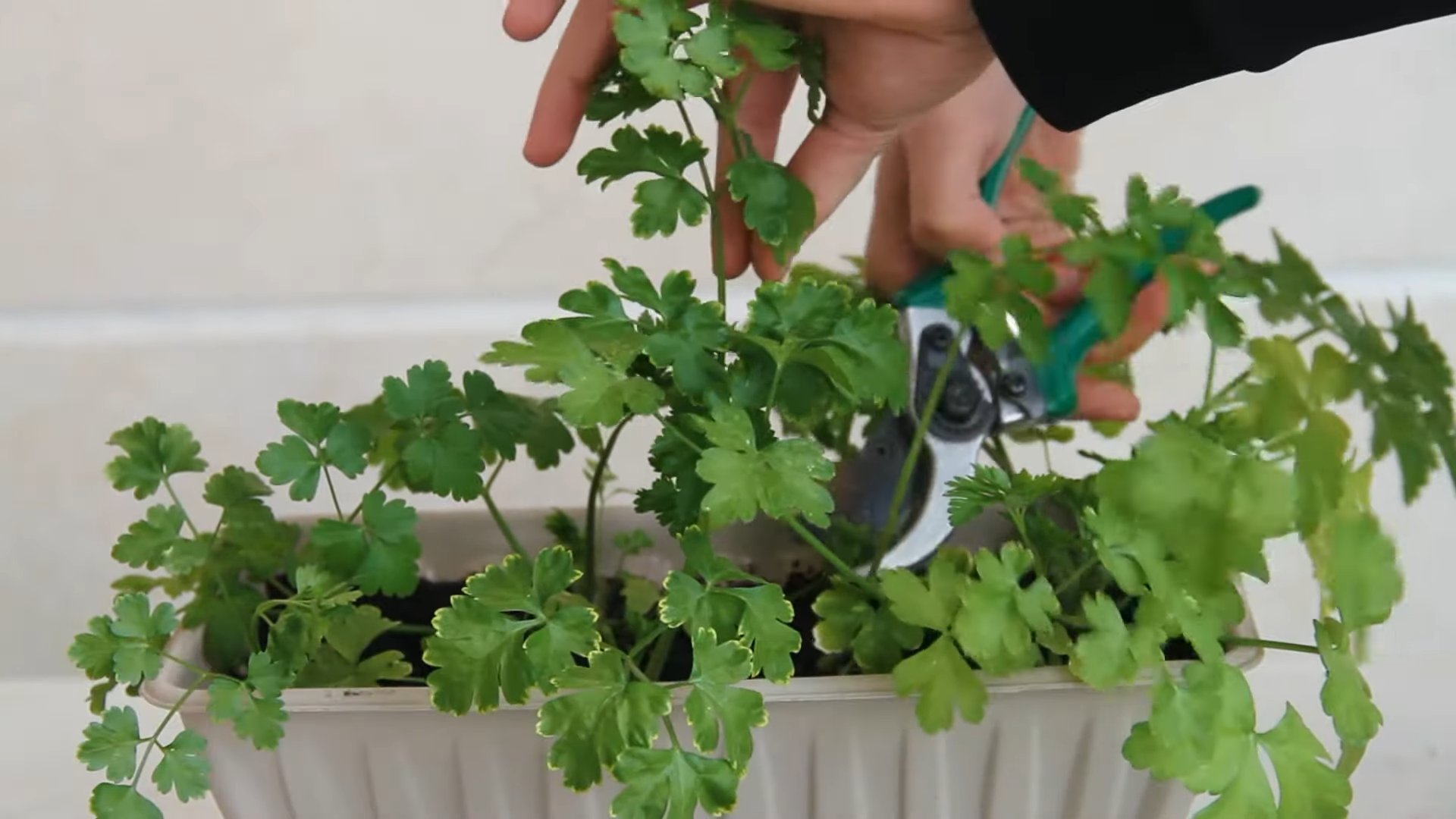
Growing Parsley Indoors: A Beginner’s Guide to a Bountiful Herb Garden
Hey there, fellow plant enthusiasts! I’m so excited to share my secrets to growing lush, vibrant parsley right in your own home. Forget those sad, wilted bunches from the grocery store – with a little know-how, you can have fresh parsley at your fingertips whenever you need it. I’ve been growing parsley indoors for years, and trust me, it’s easier than you think!
Choosing the Right Parsley Variety
First things first, let’s talk about parsley varieties. There are two main types: curly parsley and flat-leaf (Italian) parsley.
* **Curly Parsley:** This is the kind you often see as a garnish. It has a slightly milder flavor than flat-leaf parsley.
* **Flat-Leaf (Italian) Parsley:** This variety has a more robust, peppery flavor and is my personal favorite for cooking.
Honestly, you can grow either type indoors. It really comes down to personal preference. I usually opt for flat-leaf because I love its intense flavor in my pasta sauces and salads.
What You’ll Need: Gathering Your Supplies
Before we dive into the planting process, let’s make sure you have everything you need. Here’s a checklist:
* **Parsley Seeds or Seedlings:** You can start from seeds or buy small parsley plants from a nursery. Starting from seeds is more economical, but seedlings will give you a head start.
* **Potting Mix:** Use a high-quality potting mix that drains well. Avoid using garden soil, as it can compact and hinder drainage. I prefer a mix specifically formulated for herbs.
* **Pots:** Choose pots that are at least 6 inches in diameter and have drainage holes. Parsley needs room for its roots to grow. Terra cotta pots are great because they allow the soil to breathe.
* **Grow Lights (Optional but Recommended):** Parsley needs plenty of light, so if you don’t have a sunny windowsill, consider investing in grow lights.
* **Watering Can or Spray Bottle:** For gentle watering.
* **Small Trowel or Spoon:** For planting.
* **Fertilizer (Optional):** A balanced liquid fertilizer can help boost growth.
Planting Parsley from Seeds: A Step-by-Step Guide
Okay, let’s get our hands dirty! Here’s how to plant parsley from seeds:
1. **Soaking the Seeds (Optional but Recommended):** Parsley seeds can be a bit slow to germinate. To speed things up, soak them in warm water for 24 hours before planting. This helps soften the seed coat and encourages sprouting.
2. **Preparing the Pot:** Fill your pot with potting mix, leaving about an inch of space at the top. Gently tap the pot to settle the soil.
3. **Sowing the Seeds:** Sprinkle the parsley seeds evenly over the surface of the soil. You don’t need to plant them too deep – about ¼ inch is sufficient.
4. **Covering the Seeds:** Lightly cover the seeds with more potting mix.
5. **Watering:** Gently water the soil until it’s moist but not soggy. Use a spray bottle to avoid disturbing the seeds.
6. **Creating a Humid Environment:** Cover the pot with plastic wrap or a plastic bag to create a humid environment. This will help the seeds germinate.
7. **Finding the Right Spot:** Place the pot in a warm, bright location. If you’re using grow lights, position them a few inches above the pot.
8. **Waiting for Germination:** Parsley seeds can take anywhere from 2 to 4 weeks to germinate, so be patient! Keep the soil consistently moist during this time. Remove the plastic wrap once the seedlings emerge.
Planting Parsley Seedlings: A Quick Start
If you’re opting for seedlings, the process is even simpler:
1. **Preparing the Pot:** Fill your pot with potting mix, leaving about an inch of space at the top.
2. **Removing the Seedling:** Gently remove the parsley seedling from its container. If the roots are tightly bound, gently loosen them with your fingers.
3. **Planting the Seedling:** Dig a small hole in the potting mix large enough to accommodate the seedling’s root ball. Place the seedling in the hole and gently backfill with potting mix.
4. **Watering:** Water the seedling thoroughly until the soil is moist.
5. **Finding the Right Spot:** Place the pot in a sunny location or under grow lights.
Caring for Your Indoor Parsley: The Key to Success
Now that your parsley is planted, it’s time to learn how to care for it. Here’s what you need to know:
* **Light:** Parsley needs at least 6 hours of sunlight per day. If you don’t have a sunny windowsill, use grow lights. I’ve found that using a full-spectrum LED grow light for 12-14 hours a day really makes a difference.
* **Watering:** Water your parsley when the top inch of soil feels dry to the touch. Avoid overwatering, as this can lead to root rot. Make sure your pot has good drainage. I usually water mine every 2-3 days, but it depends on the humidity and temperature in my home.
* **Fertilizing:** Parsley is a relatively light feeder, but a little fertilizer can help boost growth. Use a balanced liquid fertilizer diluted to half strength every 2-3 weeks. I like to use an organic fertilizer to keep things natural.
* **Temperature:** Parsley prefers temperatures between 60°F and 70°F (15°C and 21°C). Avoid placing it near drafts or heat sources.
* **Pruning:** Regular pruning is essential for keeping your parsley plant healthy and productive. Pinch off the top leaves to encourage bushier growth. Don’t be afraid to harvest frequently – the more you harvest, the more it will grow!
* **Pest Control:** Parsley is generally pest-resistant, but occasionally you might encounter aphids or spider mites. If you notice any pests, try spraying them with a mixture of water and dish soap. You can also use insecticidal soap if the infestation is severe.
Harvesting Your Parsley: Enjoying the Fruits (or Herbs!) of Your Labor
The best part about growing your own parsley is, of course, harvesting it! You can start harvesting parsley leaves once the plant is about 6 inches tall.
1. **Choosing the Leaves:** Select the outer leaves of the plant, as these are the oldest and most mature.
2. **Cutting the Leaves:** Use scissors or pruning shears to cut the leaves near the base of the stem.
3. **Harvesting Regularly:** Harvest parsley regularly to encourage new growth.
4. **Storing Parsley:** Freshly harvested parsley can be stored in the refrigerator for up to a week. Wrap it in a damp paper towel and place it in a plastic bag. You can also freeze parsley for longer storage. Chop it up and freeze it in ice cube trays with a little water or olive oil.
Troubleshooting: Common Parsley Problems and Solutions
Even with the best care, you might encounter some problems while growing parsley indoors. Here are some common issues and how to fix them:
* **Yellowing Leaves:** This could be a sign of overwatering, underwatering, or nutrient deficiency. Check the soil moisture and adjust your watering accordingly. If the soil is dry, water thoroughly. If it’s soggy, let it dry out before watering again. If the problem persists, try fertilizing your parsley with a balanced liquid fertilizer.
* **Leggy Growth:** This is usually caused by insufficient light. Move your parsley to a sunnier location or use grow lights.
* **Slow Growth:** This could be due to a variety of factors, including poor soil, insufficient light, or lack of nutrients. Make sure you’re using a high-quality potting mix, providing adequate light, and fertilizing regularly.
* **Pests:** As mentioned earlier, aphids and spider mites can sometimes infest parsley plants. Treat them with a mixture of water and dish soap or insecticidal soap.
Extending the Harvest: Keeping Your Parsley Growing
Parsley is a biennial plant, which means it typically lives for two years. In the first year, it focuses on growing leaves, and in the second year, it flowers and produces seeds. After flowering, the plant will start to decline.
To extend the harvest, you can pinch off any flower buds that appear. This will encourage the plant to continue producing leaves. You can also propagate parsley from cuttings. Simply take a 4-6 inch cutting from a healthy stem, remove the lower leaves, and place it in a glass of water. Once roots develop, you can plant the cutting in a pot of potting mix.
Final Thoughts: Enjoying Your Homegrown Parsley
Growing parsley indoors is a rewarding experience that allows you to enjoy fresh, flavorful herbs year-round. With a little care and attention, you can have a thriving parsley plant that provides you with a constant supply of this versatile herb. So, get planting and enjoy the
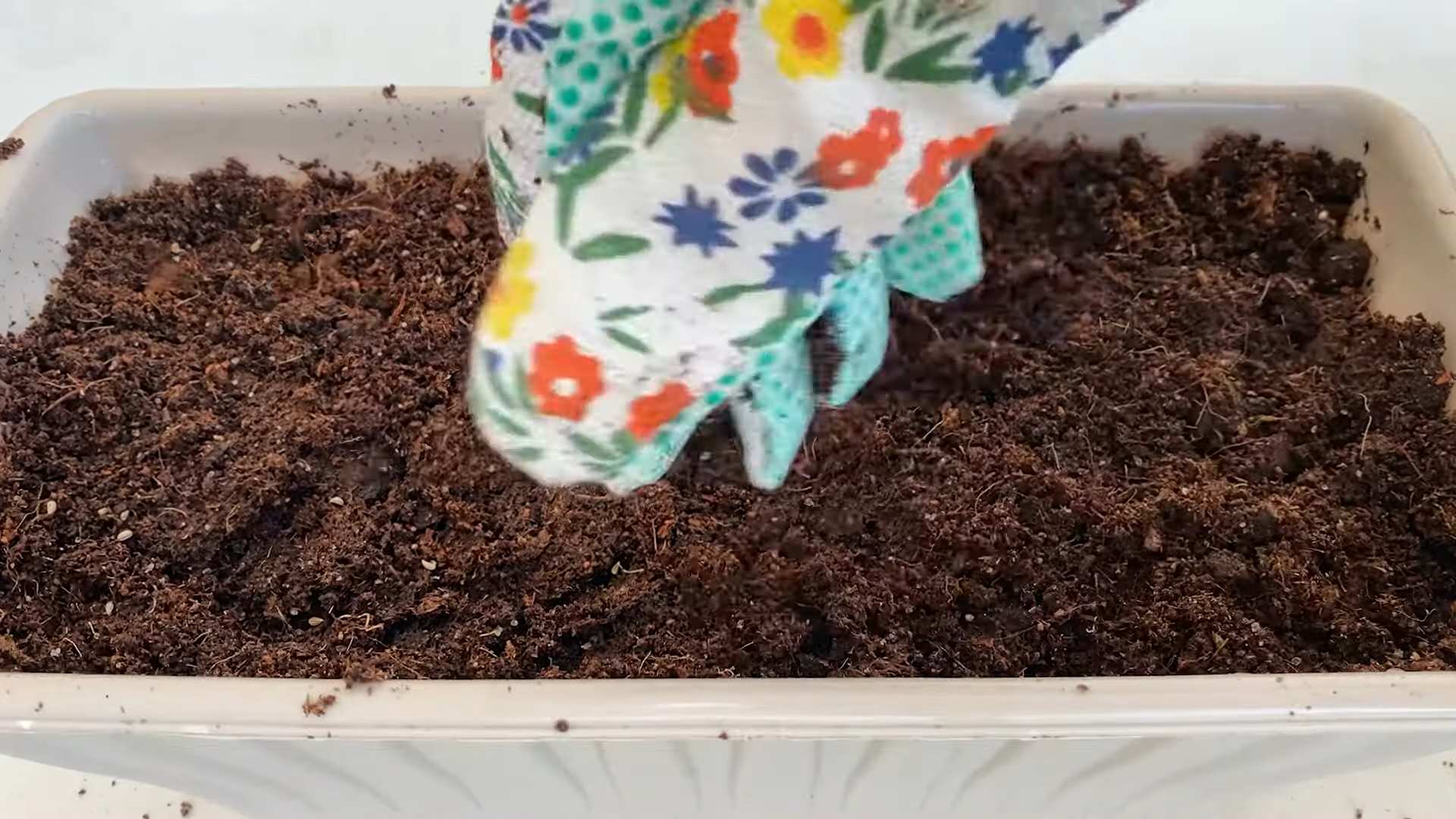
Conclusion
So, there you have it! Mastering the art of growing parsley indoors is not only achievable but also incredibly rewarding. We’ve walked through the essential steps, from selecting the right variety and providing optimal lighting to ensuring proper watering and fertilization. But why is this DIY trick a must-try?
Firstly, think about the convenience. No more last-minute dashes to the grocery store for a sprig of fresh parsley. Imagine having a constant supply of this vibrant herb right at your fingertips, ready to elevate your culinary creations. Secondly, consider the cost savings. Over time, purchasing fresh parsley regularly can add up. Growing your own is a budget-friendly alternative that allows you to enjoy fresh herbs without breaking the bank. Thirdly, and perhaps most importantly, there’s the satisfaction of nurturing something from seed to harvest. It’s a connection to nature that can be incredibly grounding and therapeutic.
This method of indoor parsley growing is a game-changer for any home cook or gardening enthusiast. It’s a simple yet effective way to bring the freshness of the garden into your kitchen, regardless of the season or your outdoor space.
But don’t stop there! Feel free to experiment with different varieties of parsley. Curly parsley is a classic choice, but flat-leaf (Italian) parsley offers a bolder flavor that some prefer. You can also try growing parsley from cuttings, although starting from seed is generally more reliable. Consider companion planting your parsley with other herbs like chives or basil in the same container, creating a mini herb garden on your windowsill. Just be sure to research the specific needs of each herb to ensure they thrive together.
Another variation to consider is hydroponic parsley growing. While it requires a slightly different setup, hydroponics can offer faster growth and higher yields. If you’re feeling adventurous, explore this option for a more advanced indoor gardening experience.
We encourage you to embrace this DIY trick and embark on your own indoor parsley growing journey. It’s a simple project that yields delicious results. Don’t be afraid to experiment, learn from your mistakes, and adapt the techniques to suit your specific environment and preferences.
Most importantly, we want to hear about your experiences! Share your successes, challenges, and any tips you’ve discovered along the way in the comments section below. Let’s create a community of indoor parsley growers and learn from each other. Happy gardening!
Frequently Asked Questions (FAQ)
1. What is the best type of parsley to grow indoors?
The best type of parsley to grow indoors depends on your personal preference. Curly parsley is a popular choice due to its decorative appearance and mild flavor. Flat-leaf (Italian) parsley, on the other hand, has a stronger, more robust flavor that many chefs prefer. Both varieties can thrive indoors with proper care. Consider trying both to see which you prefer! Also, remember that flat-leaf parsley tends to be more heat tolerant, which can be beneficial if your indoor growing environment gets warm.
2. How much sunlight does indoor parsley need?
Parsley needs at least 6-8 hours of direct sunlight per day to thrive. If you don’t have a sunny windowsill, you can supplement with a grow light. Place the grow light about 6-12 inches above the parsley plants and keep it on for 12-14 hours per day. Insufficient light will result in leggy, weak plants with pale leaves. Rotate the pot regularly to ensure all sides of the plant receive adequate light.
3. What kind of soil should I use for growing parsley indoors?
Use a well-draining potting mix that is rich in organic matter. A mix of equal parts potting soil, perlite, and compost is a good option. Avoid using garden soil, as it can be too heavy and may contain pests or diseases. Good drainage is crucial to prevent root rot, which is a common problem with indoor plants.
4. How often should I water my indoor parsley?
Water your parsley when the top inch of soil feels dry to the touch. Avoid overwatering, as this can lead to root rot. Water thoroughly until water drains out of the bottom of the pot. Empty the saucer beneath the pot to prevent the plant from sitting in water. During the winter months, when growth slows down, you may need to water less frequently.
5. How often should I fertilize my indoor parsley?
Fertilize your parsley every 2-4 weeks with a balanced liquid fertilizer diluted to half strength. Look for a fertilizer with an NPK ratio of 10-10-10 or similar. Avoid over-fertilizing, as this can burn the roots. Organic fertilizers, such as compost tea or fish emulsion, are also good options.
6. How do I harvest parsley from my indoor plant?
Harvest parsley by snipping off the outer stems near the base of the plant. This encourages new growth from the center. Avoid cutting off more than one-third of the plant at a time. Regular harvesting will keep your parsley plant bushy and productive.
7. My parsley leaves are turning yellow. What could be the problem?
Yellowing leaves can be caused by several factors, including overwatering, underwatering, nutrient deficiencies, or pests. Check the soil moisture and adjust your watering accordingly. Fertilize your parsley to address any nutrient deficiencies. Inspect the plant for pests, such as aphids or spider mites, and treat them with an appropriate insecticide or insecticidal soap.
8. How long will my indoor parsley plant last?
Parsley is a biennial plant, meaning it typically lives for two years. However, it is often grown as an annual, especially indoors. After the first year, the plant may bolt (produce flowers and seeds), which can reduce the flavor of the leaves. To prolong the life of your parsley plant, pinch off any flower buds as soon as they appear.
9. Can I grow parsley from cuttings indoors?
Yes, you can grow parsley from cuttings, but it is generally more challenging than starting from seed. Take cuttings from healthy stems, about 4-6 inches long. Remove the lower leaves and place the cuttings in water. Change the water every few days. Once roots develop, transplant the cuttings into pots filled with well-draining potting mix. Keep the soil moist and provide plenty of light.
10. What are some common pests that affect indoor parsley?
Common pests that can affect indoor parsley include aphids, spider mites, and whiteflies. Inspect your plants regularly for signs of infestation, such as sticky residue, webbing, or visible insects. Treat infestations with insecticidal soap, neem oil, or other appropriate insecticides. You can also try washing the plants with a strong stream of water to dislodge the pests.
11. Can I use my indoor grown parsley for cooking?
Absolutely! That’s the whole point! Freshly grown indoor parsley is perfect for adding flavor and freshness to a wide variety of dishes. Use it in soups, salads, sauces, stews, and as a garnish. The flavor will be much more vibrant than dried parsley.
12. My parsley plant is getting leggy and falling over. What should I do?
Leggy growth is usually a sign of insufficient light. Move your parsley plant to a sunnier location or supplement with a grow light. You can also prune the plant back to encourage bushier growth. Pinch off the tips of the stems to promote branching.

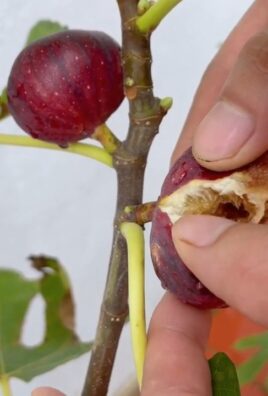
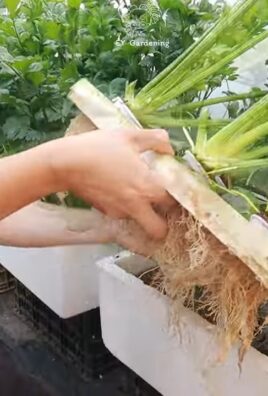
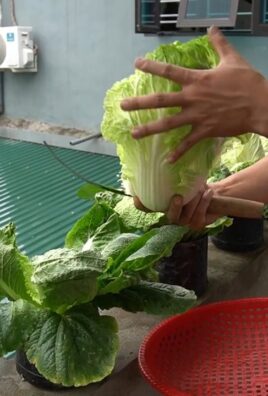
Leave a Comment